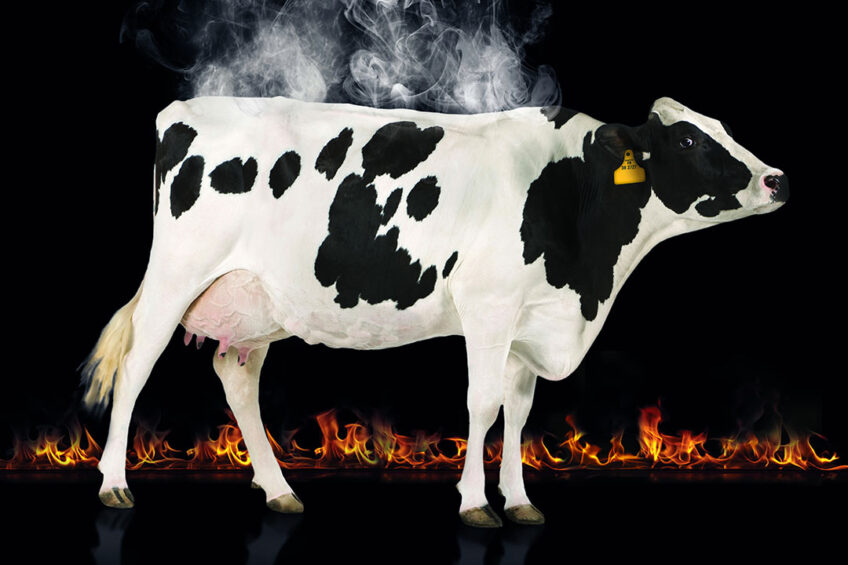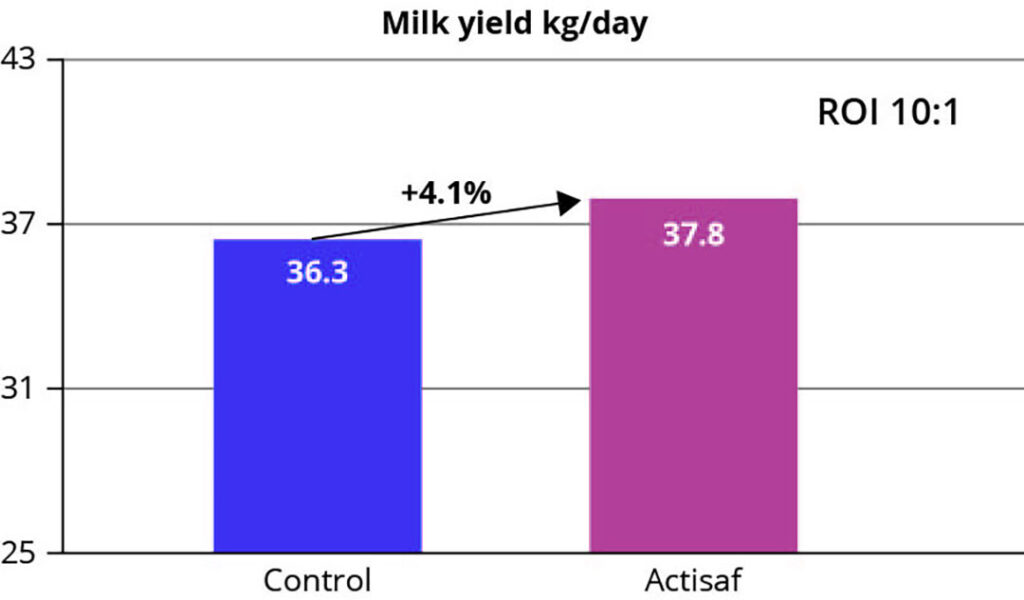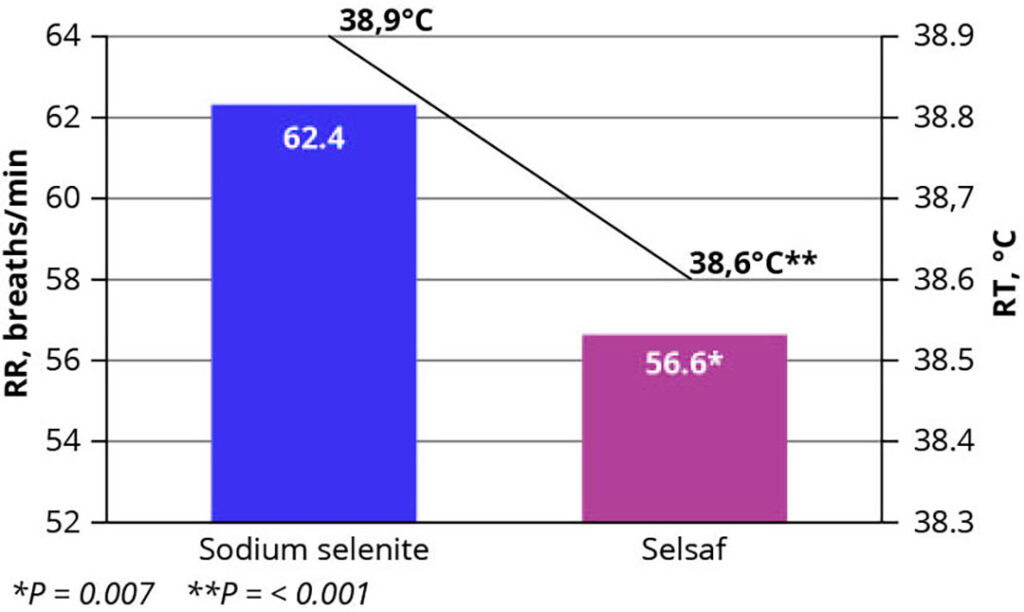Measures to cope with rising temperatures and humidity

Heat stress has been a major herd management challenge for dairy farmers over many years, presenting severe production and welfare demands in the face of ever-rising global temperatures.
With elevated temperature periods becoming increasingly common, and the impact of heat stress forecast to impose an estimated USD$ 5 billion a year cost on the dairy sector by 2050, the need for action has never been greater.
Implementing top level herd management practices during heat stress has always been important as an essential approach to dairy cow care and will undoubtedly intensify as high temperature and humidity episodes continue to increase. Alongside such techniques, the potential for yeast-based solutions to help reduce the worst impacts of heat stress on farm livestock will almost certainly have a growing part to play in the future of global dairy farming.
Impact of HS
Heat stress triggers an increase in a dairy animal’s core body temperature, lifting it above what is considered normal and shifting it towards potentially dangerous levels. Left to themselves, cows implement their own defence mechanisms. These include panting, standing rather than resting, and cutting back on heat generation activities, such as eating and ruminating. In addition to these responses indicating a downturn in the health of heat stressed livestock, they also signal that production and reproductive functions are being placed under severe pressure.
While heat stress fall-out is most pronounced in high performing cows, average milkers and young stock are also at risk when exposed to a high Temperature Humidity Index (THI) of 68 or more. This is the acknowledged threshold at which rising temperature and humidity factors typically trigger negative symptoms. THI 68 equates to a temperature of 22°C and 50% humidity. The higher the THI score becomes, of course, the more damage is caused to affected animals. According to Bernabucci et al. (2010), each THI unit in excess of 68 causes a decline in milk output of 0.27 kg. This is an alarming fact, given that severe heat stress conditions today can easily reach THI 80 or more.
How farmers can help
There are a number of practical steps for farmers to take to help livestock cope with rising THIs. These include providing extra shade, ventilation, cooling, and a plentiful supply of fresh, cool drinking water. Striving to maintain feed intake levels by shifting feeding times to the cooler parts of the day may also help, alongside spreading mealtimes over longer periods of the day than would be necessary in more normal THI conditions.
Yeast-based solutions
The role of yeast-based solutions to combat the impact of heat stress on livestock health, welfare, and performance, has also been shown to have positive protective qualities, as assessed through several institution and on-farm studies.
Program Heat Stress, for example, developed at Phileo by Lesaffre, focuses attention on the yeast probiotic Actisaf Sc 47, the yeast postbiotic Safmannan, and the organic selenium enriched yeast Selsaf, each of which have been shown to have a beneficial impact on protecting dairy cows and calves from the worst impacts of heat stress.
Figure 1 – Actisaf increases milk yield under heat stress.

Trials with Actisaf Sc 47 (Figure 1), carried out during moderate-to-high heat stress (77>THI>83), recorded a 1.5kg/day increase in milk production and a 600g/day increase in dry matter feed intake for treated cows compared to control milkers.
Actisaf Sc 47, combined with Safmannan, also delivered a strong immune response in dairy cows during heat stress, in contrast to the downgrading of immune functions which typically appear under such conditions. The successful reduction of somatic cell count (SCC) in dairy cows has also been linked to the combined use of Actisaf and Safmannan in trials carried out on 8 Dutch dairy farms, where the SCC of supplemented cows was lowered from a pre-trial average of 280,000 per farm to below 200,000.
Figure 2 – Selsaf enhances wellbeing under heat stress conditions.

Selsaf, given to dairy cows which were exposed to THI 72 for 9 weeks, delivered a significant reduction in rectal temperatures and respiratory rates (Figure 2), compared with cows in an inorganic selenium group. The product also significantly lowered SCC in the treated cow group.
Keeping cows healthy and productive
Many and varied management approaches have been developed to help alleviate the impact of heat stress with the use of yeast-based products being seen increasingly as a promising protection and treatment solution. Yeast probiotic, parietal fractions and selenium yeast all present themselves as strong candidates to help farmers keep cows healthy and productive in the face of an ever more demanding global climate.
References are available on request.







